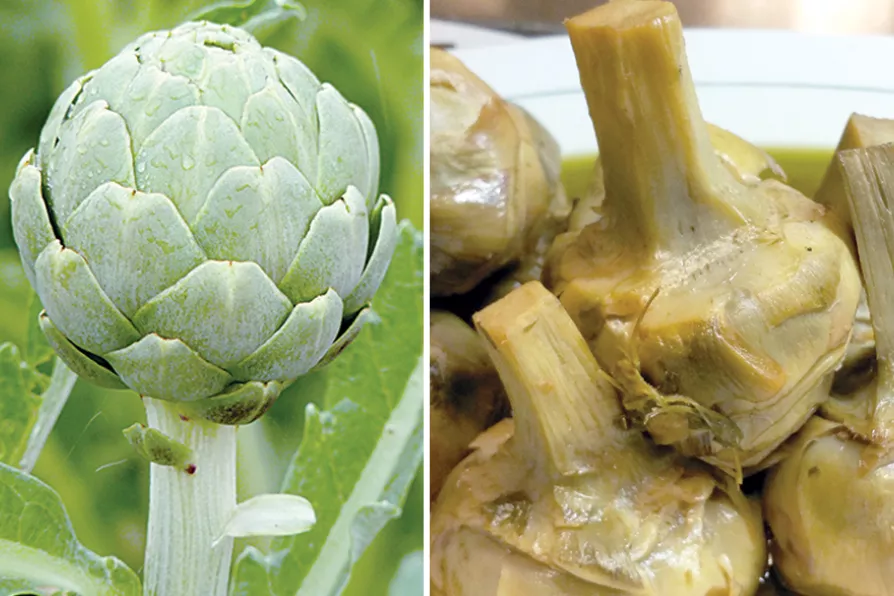The catastrophe unfolding in Gaza – where Palestinians are freezing to death in tents – is not a natural disaster but a calculated outcome of Israel’s ongoing blockade, aid restrictions and continued violence, argues CLAUDIA WEBBE
The artichoke challenge
Although there’s not much growing in the garden in January, globe artichokes are worth a try if you follow these tips from MAT COWARD

 ARTICHOKES GALORE: (L to R) Growing in a allotment and cooked roman style
[(L to R) Jamain/CC - Popo le Chien/CC]
ARTICHOKES GALORE: (L to R) Growing in a allotment and cooked roman style
[(L to R) Jamain/CC - Popo le Chien/CC]
THERE aren’t many vegetable seeds you can sow in January, but globe artichoke is worth trying if you’re able to maintain an even temperature of around 55-60°F (13-15°C). If not, leave them until March or April.
Whenever you start, put each seed singly in a three-inch (7.5cm) pot, about a fingernail’s depth in seed compost, in a place with plenty of natural light.
Keep the compost just the moist side of dry, because artichoke seeds are large and can rot rather easily if they stay wet for too long.
Similar stories

MAT COWARD presents a peculiar cabbage that will only do its bodybuilding once the summer dies down

MAT COWARD rises over such semantics to offer step by step, fool-proof cultivating tips

It’s a dead easy crop to grow and can be made into one of Britain’s best sauces. MAT COWARD explains how

MAT COWARD battles wayward pigeons in pursuit of a crop of purple sprouting broccoli










